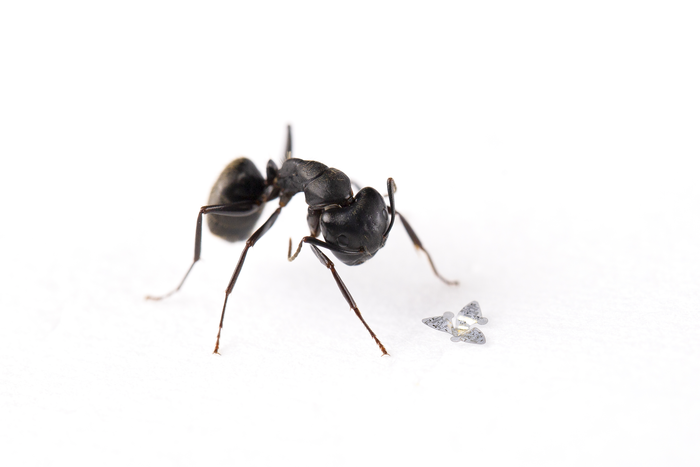
John Rogers at Northwestern University and his team have developed tiny wireless sensors inspired by floating seeds which could be used to measure environmental factors, and may also have military applications. The new flying microchip (also called, “micro flier”) is less than a millimeter across and is transported by air currents.
The research team optimized the microflier’s aerodynamics to ensure that it falls at a slow velocity in a controlled manner after being dropped from a high elevation. Its aerodynamics stabilizes its flight, ensures dispersal over a broad area, and increases the amount of time it interacts with the air – maximizing its ability for monitoring air pollution, contaminants, and airborne disease. The microfliers can be loaded with ultra-miniaturized technology, such as sensors, power sources, antennas for wireless communication, and embedded memory to store data.
“Our goal was to add winged flight to small-scale electronic systems, with the idea that these capabilities would allow us to distribute highly functional, miniaturized electronic devices to sense the environment for contamination monitoring, population surveillance or disease tracking,” said Rogers. “We were able to do that using ideas inspired by the biological world. Over the course of billions of years, nature has designed seeds with very sophisticated aerodynamics. We borrowed those design concepts, adapted them and applied them to electronic circuit platforms.”
Rogers and his team designed and built many different types of micro fliers, and then used full-scale computational modeling of how the air flows around the device in order to pinpoint the most ideal structure.
“The computational modeling allows a rapid design optimization of the fly structures that yields the smallest terminal velocity,” Yonggang Huang said. “This is impossible with trial-and-error experiments.”
The micro fliers are made up of two parts: millimeter-sized electronic functional components and their wings. The weight of the electronics is distributed low in the center of the microfilter to prevent it from losing control and simply falling to the ground.
“We think that we beat nature,” Rogers said. “At least in the narrow sense that we have been able to build structures that fall with more stable trajectories and at slower terminal velocities than equivalent seeds that you would see from plants or trees. We also were able to build these helicopter flying structures at sizes much smaller than those found in nature. That’s important because device miniaturization represents the dominating development trajectory in the electronics industry, where sensors, radios, batteries and other components can be constructed in ever smaller dimensions.”
